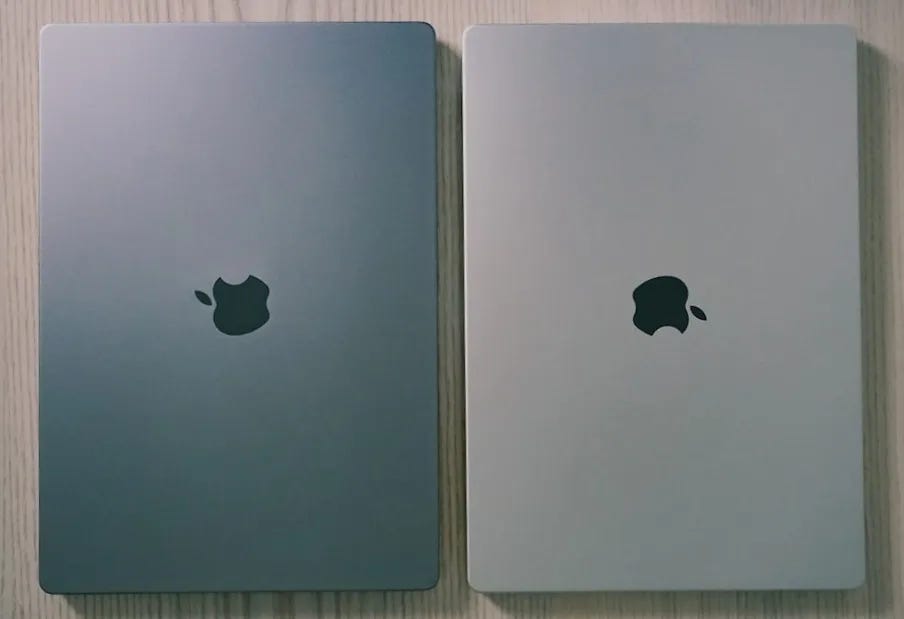Welcome to the fourth weekly installment in my series on “Humanizing Work” – can we embrace AI, grow professionally, and stay human-centered, all at once?

Today’s focus is on leaving for a new job. Some of you may be ready for a fresh challenge. Others may feel underutilized in their current roles. If so, your feelings are likely amplified by the advent of AI. Disruptive technologies create a sense of urgency, to seize opportunity before it slips away.
There is no shortage of advice when switching jobs, from being careful to observe legal commitments such as non-solicit provisions and confidentiality obligations, to not burning your bridges at the exit interview, and composing a gracious farewell email. However, the AI revolution presents some new challenges that you might need to think through.
Workflow Woes. Most companies allow you to export your contact list and bring your professional relationships with you. They even support porting your phone number to a new device. But they draw the line at proprietary information: client lists, internal documents, and descriptions of company processes. These belong to your employer and you have to leave them behind.
But the advent of copilots and no code/low code tools means employees will increasingly rely on prompts they have written, agents they have created, and workflows they have designed. According to employment contracts, these also belong to your employer, and, like a client list, you can’t take them with you. So, you need to anticipate a ramp-up period in which you independently reconstruct these capabilities.
Model Matching. Of course, all of that assumes that your new company has a comparable setup to the one you are leaving. What if you prefer Claude but they only use OpenAI? What if they don’t have Copilot Studio? What if you relied on NeMo guardrails for AI trustworthiness, but the new employer’s setup isn’t quite up to snuff? For thirty years, knowledge workers have relied on a standard set of tools: Office Suite and Outlook. But everyone is experimenting with new tools which are not universally adopted, and you’re going to need to adapt and adjust. Depending on how integral these tools are to your success, it may make sense to have this conversation with your new employer sooner (pre-start) than later.
Elegant Exit. If you are an AI champion, the departure of a critical contributor may leave your employer in a lurch. Be sensitive to this: identify a suitable replacement and offer to train them. Share your roadmap, and be generous with your relationships, asking colleagues to help them. Check in after you’ve moved on. Of course, you aren’t under any obligation to, but some employees return to their former employers in more senior roles. A good name on the way out makes for smooth passage on the way back in.
But how can you make a good decision about where to move. Companies that humanize work keep people in focus even as they adopt AI-driven work patterns. How can you be sure a prospective employer holds those values? Here are some suggestions.
People & Process. Ask them to describe their most successful AI project. Ask what humans did before, and what humans do now. Ask what happened to the humans who did the manual work before – are they no longer at the company, or were they an integral part of shaping the change, and did they learn new skills as a result? If possible, ask to speak to one of them so you can ask them about their experience. You may one day be in their shoes.
Savings & Sense. Ask how AI ideas are sourced, and how important demonstrating efficiency or cost savings is. Of course, having an ROI on an AI project is important. But talk about the AI bubble bursting because companies cannot demonstrate outright savings is overblown. The smartest companies will temper improving margins with improving culture. AI that enables collaboration, or deeper engagement, is more valuable than trimming headcount. Colleagues that want to use AI to change work patterns so they are more intellectually challenging, or solve harder problems, should be encouraged to do so even if no direct savings are achieved.
Humans as Heroes. Finally, ask what critical functions humans will play in the company’s future. Not necessarily by job description, but conceptually. A rote answer will use buzzwords like “human in the loop” or “human oversight”. What I hope you will hear is that humans are needed to connect and organize other humans, and a description of what that might look like. I hope you hear that humans are needed to feel, to dream, to understand what customers experience, and for those words to be spoken with conviction grounded in experience.
I also hope you hear many people at the company talk about other people, rather than just technology. For decades, executives have focused on software, internet, mobile, killer apps, data, analytics, cloud, and all the amazing inventions that enable scale and efficiency. But as AI becomes more accessible and more ubiquitous, it will also be more commoditized.
The playing field will level.
And the differentiator will be people.

Tomorrow, I believe great companies will be distinguished by stories such as how this person is so respected for their moral clarity in a moment of great confusion, how that person took a compassionate perspective on matters of great importance and small importance, how those teams were admired for how people, not machines, found ways to work together to achieve something impressive.
Sounds like a great place to work, no?
Next week: retrenchment in the AI Era.
Grace and peace, J
Please consider subscribing to both Deeply Boring (Substack) and its complementary sibling newsletter, Beyond Boring (LinkedIn) to ensure the richest cross-platform content experience.




